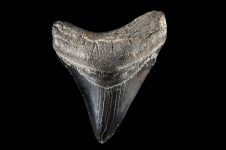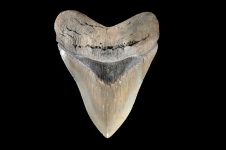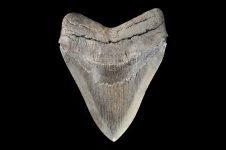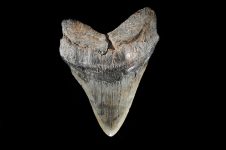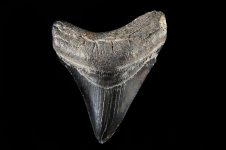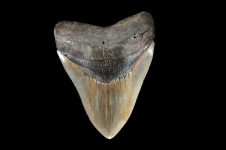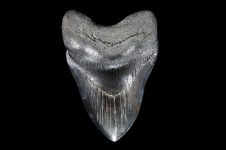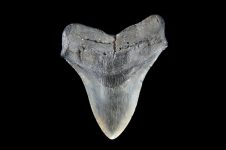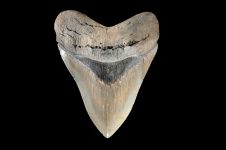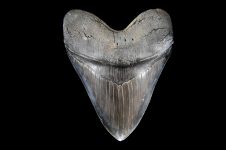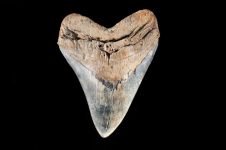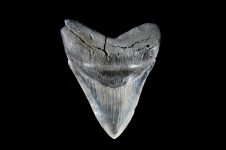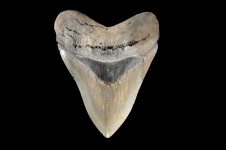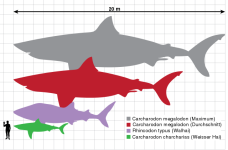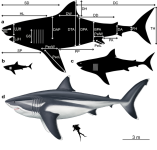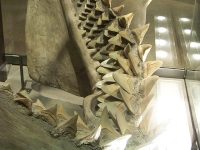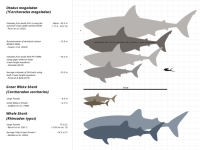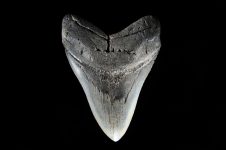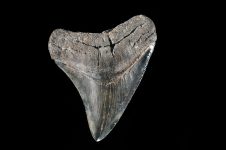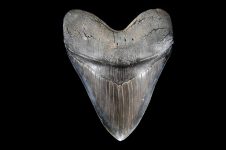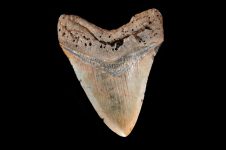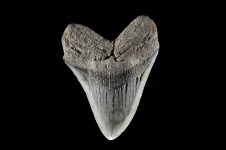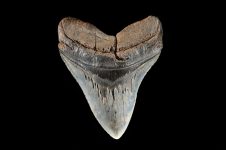Megalodon
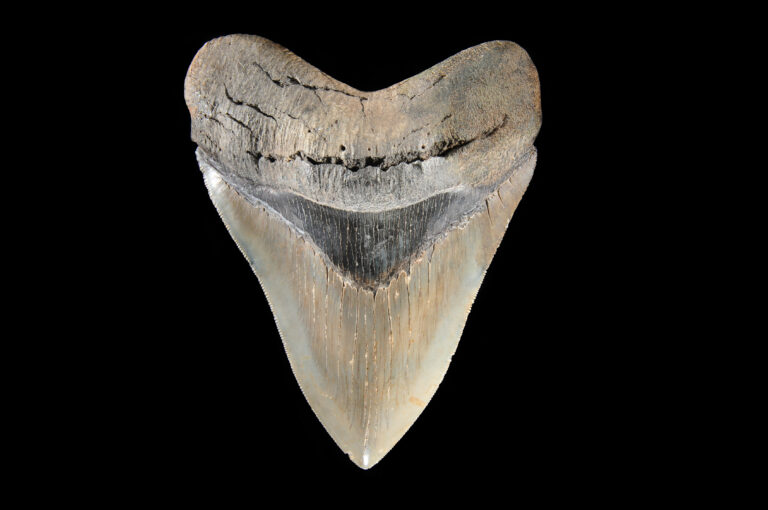
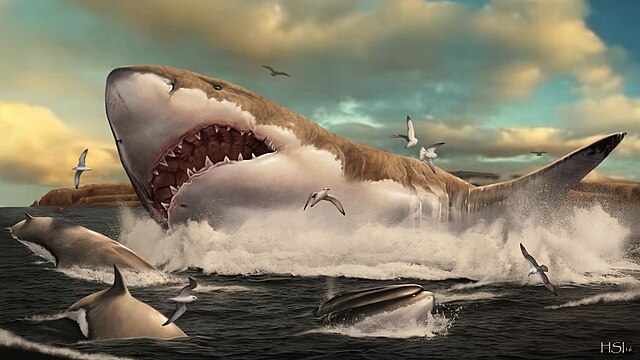
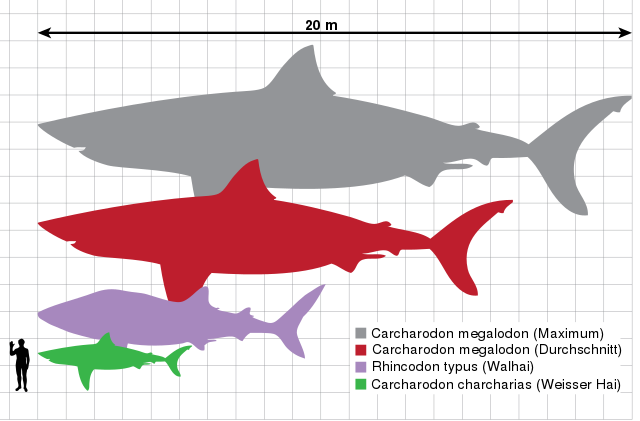
Megalodon
Megalodon sharks, scientifically known as Carcharocles megalodon, are among the most fascinating and awe-inspiring creatures to have ever inhabited our planet’s oceans. These colossal predators dominated marine ecosystems for millions of years during the Cenozoic Era, leaving an indelible mark on paleontological records and sparking curiosity among scientists and enthusiasts alike. In this comprehensive exploration, we delve into the world of megalodons, examining their anatomy, behavior, habitat, extinction, and their enduring legacy in popular culture and scientific research.
ANATOMY AND SIZE
Megalodons were colossal creatures, towering over their modern shark counterparts. Fossil evidence suggests they could reach lengths of up to 60 feet (18 meters) or more, making them one of the largest predators in Earth’s history. Their bodies were robust and streamlined, resembling modern great white sharks but on a much larger scale. The key feature that often captures the imagination is their teeth — triangular, serrated, and massive, sometimes exceeding 7 inches (18 cm) in length. These teeth were perfectly adapted for gripping and tearing through the thick hides and blubber of their prey, which primarily consisted of large marine mammals such as whales, dolphins, and seals.
EVOLUTIONARY HISTORY
The evolutionary lineage of megalodons traces back to the early Miocene epoch, around 23 million years ago. They are believed to have evolved from smaller ancestors and gradually grew in size and dominance over subsequent epochs. Megalodons flourished during the middle to late Miocene period and into the Pliocene epoch, approximately 3.6 million years ago, when they mysteriously disappeared from the fossil record. Their evolution and rise to apex predator status were likely influenced by factors such as changes in oceanic environments, availability of prey, and adaptations to competition with other marine predators.
HABITAT AND DISTRIBUTION
Megalodons were highly adaptable predators that inhabited oceans across the globe. Fossils of their teeth and vertebrae have been discovered on every continent except Antarctica, indicating a widespread distribution during their heyday. They preferred warmer waters, which were rich in marine life and provided ample prey opportunities. Their ability to thrive in various oceanic environments contributed to their success as apex predators for millions of years.
FEEDING BEHAVIOR AND DIET
As apex predators of their time, megalodons were formidable hunters capable of taking down prey much larger than themselves. Their diet primarily consisted of large marine mammals, including early whales, dolphins, seals, and possibly other sharks. Fossilized remains of prey with distinctive bite marks attributed to megalodons provide valuable insights into their feeding behavior and ecological role. Their powerful jaws and razor-sharp teeth enabled them to inflict devastating wounds on their prey, allowing them to feed efficiently on large carcasses and maintain their massive size and energy requirements.
EXTINCTION THEORIES
The extinction of megalodons around 3.6 million years ago remains a subject of debate among paleontologists and marine biologists. Several theories have been proposed to explain their disappearance from the fossil record:
- Climate Change: Shifts in global climate patterns and ocean temperatures during the late Pliocene may have altered marine ecosystems and disrupted the distribution of prey species crucial to megalodon survival.
- Competition and Predation: The emergence and diversification of new marine predators, such as early toothed whales and large predatory sharks like the great white shark, could have competed with megalodons for food resources and led to their decline.
- Oceanographic Changes: Changes in ocean currents, nutrient availability, and marine productivity may have impacted the availability of prey species, making it challenging for megalodons to sustain their massive energy requirements.
- Catastrophic Events: Some hypotheses suggest that catastrophic events, such as asteroid impacts or volcanic eruptions, may have caused sudden environmental disturbances that affected marine ecosystems and contributed to the decline of megalodons
FOSSIL DISCOVERIES AND SCIENTIFIC RESEARCH
The study of megalodon fossils has provided invaluable insights into their biology, ecology, and evolutionary history. Fossilized teeth and vertebrae are the most common remnants found, often preserved in marine sediments and coastal deposits around the world. Paleontologists analyze these fossils to reconstruct the size, anatomy, and dietary preferences of megalodons, shedding light on their role as apex predators and their interactions with ancient marine ecosystems.
Advances in paleontological techniques, such as isotopic analysis and CT scanning, have enabled scientists to further explore the biology and behavior of megalodons. By examining stable isotopes in fossilized teeth, researchers can infer details about the diet and migration patterns of these ancient predators. CT scanning allows for non-invasive examination of fossilized remains, revealing internal structures and providing clues about the physiology and growth rates of megalodons.
CULTURAL IMPACT AND POPULAR IMAGERY
Megalodons have captured the popular imagination and featured prominently in literature, art, and popular culture. Their immense size, ferocious appearance, and reputation as apex predators have made them iconic symbols of ancient marine life and the mysteries of the deep. From novels and documentaries to films and video games, megalodons continue to inspire fascination and curiosity, sparking debates and speculation about their behavior, extinction, and potential survival in unexplored oceanic depths.
